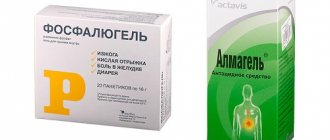Enzyme
| Pepsin | |
| Pepsin in combination with pepstatin.[1] | |
| Identifiers | |
| EU number | 3.4.23.1 |
| Number of CAS | 9001-75-6 |
| Database | |
| IntEnz | View IntEnz |
| BRENDA | BRENDA entry |
| ExPASy | View NiceZyme |
| KEGG | Sign up for KEGG |
| MetaCyc | metabolic pathway |
| PRIAM | profile |
| PDB structures | RCSB PDB PDBe PDBsum |
| Gene ontology | AmiGO/QuickGO |
| NCBI | squirrels |
| pepsin B | |
| Identifiers | |
| EU number | 3.4.23.2 |
| Number of CAS | 9025-48-3 |
| Database | |
| IntEnz | View IntEnz |
| BRENDA | BRENDA entry |
| ExPASy | View NiceZyme |
| KEGG | Sign up for KEGG |
| MetaCyc | metabolic pathway |
| PRIAM | profile |
| PDB structures | RCSB PDB PDBe PDBsum |
| NCBI | squirrels |
| pepsin C (gastricsin) | |
| Identifiers | |
| EU number | 3.4.23.3 |
| Number of CAS | 9012-71-9 |
| Database | |
| IntEnz | View IntEnz |
| BRENDA | BRENDA entry |
| ExPASy | View NiceZyme |
| KEGG | Sign up for KEGG |
| MetaCyc | metabolic pathway |
| PRIAM | profile |
| PDB structures | RCSB PDB PDBe PDBsum |
| NCBI | squirrels |
Pepsin
is an endopeptidase that breaks proteins into smaller peptides. Produced in the main cells of the stomach lining and is a major digestive enzyme in the digestive system of humans and many other animals, where it helps digest proteins into food. Pepsin is an aspartic protease using a catalytic aspartate at its active site.[2]
It is one of the three major proteases in the human digestive system, the other two being chymotrypsin and trypsin. During digestion, these enzymes, each specialized in breaking bonds between specific types of amino acids, work together to break down food proteins into their components, that is, peptides and amino acids, which can be easily absorbed by the small intestine. The specificity of pepsin cleavage is broad, but certain amino acids like tyrosine, phenylalanine and tryptophan increase the likelihood of cleavage.[3]
Pepsin proenzyme, pepsinogen
, is released by the main cells in the stomach wall and when mixed with hydrochloric acid from the gastric juice, pepsinogen is activated and converted into pepsin.[2]
Story
Pepsin was one of the first enzymes discovered in 1836 by Theodor Schwann. Schwann came up with his name from the Greek word πέψις pepsis
, meaning "digestion" (from πέπτειν
peptein
"to digest").[4][5][6][7] Around this time, scientists began to discover many biochemical compounds that play important roles in biological processes, and pepsin was one of them. An acidic substance capable of converting nitrogen-based food into water-soluble material has been identified as pepsin.[8]
In 1928, it became one of the first enzymes to be crystallized when John H. Northrop crystallized it using dialysis, filtration, and refrigeration.[9]
Predecessor
Pepsin - This is expressed as a zymogen called pepsinogen, whose primary structure has 44 more amino acids compared to the active enzyme.
In the stomach, the main cells release pepsinogen. This zymogen is activated by hydrochloric acid (HCl), which is secreted from the parietal cells in the gastric mucosa. The hormone gastrin and the vagus nerve trigger the release of pepsinogen and HCl from the gastric mucosa when eating food. Hydrochloric acid creates an acidic environment, which allows pepsinogen to unfold and break down in an autocatalytic mode, thereby generating pepsin (the active form). Pepsin cleaves 44 amino acids from pepsinogen to create more pepsin.
Pepsinogens are mainly grouped into 5 different groups based on their primary structure: pepsinogen A (also called pepsinogen I), pepsinogen B, progastricin (also called pepsinogen II and pepsinogen C), prochymosin (also called prorennin) and pepsinogen F (also called pregnancy-associated glycoprotein).[10]
Pepsin instructions for use
Pepsin is a natural enzyme.
It is part of the gastric juice - this substance is responsible for the breakdown of complex proteins and fats. The enzyme is located in the lining of the stomach and is produced by the body. An acidic environment is required for the substance to act. Hydrochloric acid in this case is the best option. The level of pepsin in the human body increases or decreases under the influence of external factors.
The use of the derived additive is due to its properties - it allows you to start certain processes in an acidic or semi-acidic environment. Pharmacy or other drugs are prepared from the additive removed from the animal's body.
Pepsin is used for various purposes:
- In medicinal. It allows you to restore the correct intestinal microflora.
- For creating culinary recipes. This additive is no less popular for making various cheeses. It is added to the prepared milk base. During chemical and biological reactions, under the influence of an enzyme product, the milk mixture is divided into whey and curd mass.
The method of using an enzyme substance is determined by its quality. It comes in powder form. Dry starter for cooking or for treatment is diluted according to the instructions - this is the main guide on how to safely use the active component.
Natural sourdough has contraindications. It should not be used by people with ulcerative colitis or gastritis. Increased stomach acidity is also a contraindication for taking the enzyme, even after homemade cheese has been made from it.
Activity and stability
Pepsin is most active in an acidic environment with a pH of 1.5 to 2.5.[11] The optimal temperature for pepsin is between 37 °C and 42 °C.[12][13] Accordingly, its main place of synthesis and activity is in the stomach (1.5 to 2). In humans, the concentration of pepsin in the stomach reaches 0.5 - 1 mg / ml.[14][15]
Pepsin is inactive at pH 6.5 and above, however pepsin is not completely denatured or irreversibly inactivated before pH 8.0.[11][16] Therefore, pepsin in solutions with a pH of up to 8.0 can be reactivated by repeated acidification. The stability of pepsin at high pH has a significant impact on the disease associated with laryngopharyngeal reflux. Pepsin remains in the larynx after gastric reflux.[17][18] At an average laryngeal pH (pH = 6.8), pepsin will be inactive, but may be reactivated by subsequent acid reflux events leading to local tissue damage.
Pepsin exhibits broad specificity for cleavage. Pepsin digests up to 20% of absorbed amide bonds. [19]:96. Residues at positions P1 and P1' are most important in determining the probability of cleavage. Generally, hydrophobic amino acids at the P1 and P1' positions increase the likelihood of cleavage. Phenylalanine, leucine, and methionine at the P1 position, and phenylalanine, tryptophan, and tyrosine at the P1 position lead to the greatest likelihood of cleavage.[3][19]:675 Cleavage is discouraged by the positively charged amino acids histidine, lysine, and arginine at the P1 position.[3] ]
Pepsin breaks down Phe1Val, Gln4Ego, Glu13Ala, Ala14Leu, Leu15Tyr, Tyr16Leu, Gly23Phe, Phe24 in the insulin B chain. [ citation needed
]
For laryngopharyngeal reflux
Pepsin is one of the main causes of mucosal damage during laryngopharyngeal reflux.[20][21] Pepsin remains in the larynx (pH 6.8) after gastric reflux.[17][18] Although enzymatically inactive in this environment, pepsin remains stable and can be reactivated during subsequent acid reflux events.[16] Exposure of the laryngeal mucosa to enzymatically active pepsin, but not to irreversibly inactivated pepsin or acid, results in decreased expression of protective proteins and thus increases the susceptibility of the larynx to injury.[16][17][18]
Pepsin can also cause damage to mucous membranes in mild or non-acid gastric reflux. Mild or non-acid reflux correlates with reflux symptoms and mucosal damage.[22][23][24][25] Under non-acidic conditions (neutral pH), pepsin is taken up by cells in the upper respiratory tract, such as the larynx and hypopharynx, through a process known as receptor-mediated endocytosis.[26] The receptor by which pepsin is endocytosed is currently unknown. After cellular uptake, pepsin accumulates in intracellular vesicles at a low pH, at which its enzymatic activity is restored. Pepsin remains in the cell for up to 24 hours.[27] This exposure to pepsin at neutral pH and pepsin endocytosis causes changes in gene expression associated with inflammation, which underlie the signs and symptoms of reflux,[28] and tumor progression.[29] This and other studies[30] implicate pepsin in carcinogenesis associated with gastric reflux.
Pepsin in respiratory specimens is considered a sensitive and specific marker of laryngopharyngeal reflux.[31][32] Research is ongoing to develop new therapeutic and diagnostic tools for the treatment of gastric reflux that target pepsin. A rapid, non-invasive pepsin diagnostic called Peptest is now available, which detects the presence of pepsin in saliva samples.[33]
Precautionary measures
Taking pepsin supplements may be associated with some side effects. They are quite rare, but, nevertheless, they can seriously affect your health. Side effects of this supplement include stomach pain, severe indigestion, nausea, rash, and diarrhea. ()
Typically, these side effects occur if you take too much pepsin supplement at one time.
If you notice any side effects, be sure to consult your doctor. Especially if this condition does not go away and becomes even worse. Also, be sure to talk to your doctor about the possibility of taking such supplements if you take any medications on a regular basis; if you have allergies or are undergoing treatment; and if you are pregnant, planning to become pregnant or breastfeeding.
Inhibitors
Pepsin can be inhibited by high pH (see Activity and Stability) or by inhibitory compounds. Pepstatin is a low molecular weight compound and a potent inhibitor specific for acid proteases with a Ki of about 10−10 M for pepsin. The static residue of pepstatin is thought to be responsible for pepstatin's inhibition of pepsin; statin is a potential transition state analogue for catalysis by pepsin and other acid proteases. Pepstatin does not bind pepsin covalently, and therefore the inhibition of pepsin by pepstatin is reversible.[34] 1-bis(diazoacetyl)-2-phenylethane reversibly inactivates pepsin at pH 5, a reaction that is accelerated by the presence of Cu(II).[35]
Porcine pepsin is inhibited by pepsin inhibitor-3 (PI-3), produced by large porcine roundworms ( Ascaris suum
).[36] PI-3 occupies the active site of pepsin using its N-terminal residues and thereby blocks substrate binding. Amino acid residues 1-3 (Gln-Phe-Leu) of mature PI-3 bind to positions P1' - P3' of pepsin. N-terminus of PI-3 in the PI-3 complex: pepsin is positioned through hydrogen bonds that form an eight-stranded β-sheet, with three strands contributed by pepsin and five by PI-3.[36]
Pepsin is also subject to feedback inhibition; the protein digestion product slows the reaction by inhibiting pepsin.[37][38]
Sucralfate also inhibits pepsin activity.[39]
General information
Pepsin is a globular protein with a molecular weight of about 34,500. The pepsin molecule is a polypeptide chain that consists of 340 acids, contains 3 disulfide bonds (—S—S—) and phosphoric acid. Pepsin is an endopeptidase, that is, an enzyme that cleaves central peptide bonds in molecules of proteins and peptides (except keratins and other scleroproteins) to form simpler peptides and free acids.
Pepsin is used in laboratories to study the primary structure of proteins, in cheese making and in the treatment of certain diseases of the gastrointestinal tract.
Pepstatin is a natural pepsin inhibitor.
Applications
Beeman's Pepsin Chewing Gum Adams Pepsin Tutti Frutti Gum Marketed "For the Relief of Indigestion and Dyspepsia"
Commercial pepsin is extracted from the glandular layer of the stomachs of pigs. This rennet component is used to curdle milk in cheese production. Pepsin is used for a variety of purposes in the food industry: to modify and fluff soy protein and gelatin,[40] to modify plant proteins for use in non-dairy snacks, to convert precooked cereals into instant hot cereals,[41] and to prepare hydrolysates animal and vegetable protein for use in food and beverage flavorings. It is used in the leather industry to remove hair and tissue debris from hides and to recover silver from discarded photographic films by digesting the gelatin layer that holds the silver.[42] Pepsin was historically an additive Beeman's gum, a brand of chewing gum by Dr. Edward E. Beeman.
Pepsin is commonly used in the preparation of F(ab')2 fragments from antibodies. In some assays, it is preferable to use only the antigen-binding (Fab) portion of the antibody. For these applications, antibodies can be enzymatically cleaved to form a Fab or F(ab')2 antibody fragment. To produce the F(ab')2 fragment, IgG is digested with pepsin, which cleaves the heavy chains near the hinge region.[43] One or more disulfide bonds that attach to the heavy chains in the hinge region are retained, so the two Fab regions of the antibody remain joined together, yielding a divalent molecule (containing two antibody binding sites), hence the designation F(ab')2. The light chains remain intact. and are attached to the heavy chain. The Fc fragment is cleaved into small peptides. Fab fragments are generated by cleavage of IgG using papain instead of pepsin. Papain cleaves IgG above the hinge region containing the disulfide bonds that attach to the heavy chains, but below the disulfide bond site between the light and heavy chains. This generates two separate monovalent (containing a single antibody binding site) Fab fragment and an intact Fc fragment. Fragments can be purified by gel filtration, ion exchange or affinity chromatography.[44]
Fab and F(ab')2 antibody fragments are used in assay systems where the presence of the Fc region may cause problems. In tissues such as lymph nodes or spleen, or in peripheral blood preparations, there are cells with Fc receptors (macrophages, monocytes, B lymphocytes and natural killer cells) that can bind the Fc region of intact antibodies, causing background staining in areas that do not contain the target antigen. The use of F(ab')2 or Fab fragments ensures that the antibodies bind to the antigen and not to the Fc receptors. These fragments may also be desirable for staining cell preparations in the presence of plasma because they are unable to bind complement, which can lyse cells. F(ab')2 fragments and, to a greater extent, Fab, allow more precise localization of the target antigen, that is, in the tissue to be stained for electron microscopy. The bivalency of the F(ab')2 fragment allows it to cross-link antigens, allowing it to be used for precipitation assays, cell aggregation via surface antigens, or rosette assays.[45]
How to replace the enzyme?
To make cheese, not only regular pepsin is used, but also its derivative component, mucorpepsin. This enzyme belongs to the hydrolase class. It is obtained from mushrooms and is used to replace animal supplements.
The Russian market offers starter cultures with microbial renin or plant enzymes for preparing brine. Most of the products are produced outside the country. They are a good vegetarian version of a popular product.
Genes
The following three genes encode identical human pepsinogen A enzymes:
| ||||||||||||||||
| H.G.N.C. | 8886 |
| OMIM | 169720 |
| RefSeq | NM_001079808 |
| UniProt | P00790 |
| Other data | |
| EU number | 3.4.23.1 |
| Locus | Chr. 11 q13 |
| H.G.N.C. | 8887 |
| OMIM | 169730 |
| RefSeq | NM_014224 |
| UniProt | P00790 |
| Other data | |
| EU number | 3.4.23.1 |
| Locus | Chr. 11 q13 |
The fourth human gene encodes gastrixin, also known as pepsinogen C:
| ||||||||||||||||
References
- PDB: 1PSO; Fujinaga M, Chernaia MM, Tarasova NI, Mosimann SC, James MN (May 1995). "Crystal structure of human pepsin and its complex with pepstatin". Protein Science
.
4
(5): 960–72. Doi:10.1002/pro.5560040516. PMC 2143119. PMID 7663352. - ^ a b
"Enzyme input 3.4.23.1".
ExPASy Bioinformatics Resource Portal
. SIB. Retrieved December 14, 2008. - ^ a b c
Hamuro Y., Coales S.J., Molnar K.S., Taske S.J., Morrow J.A.
(April 2008). "Specificity of immobilized porcine pepsin under conditions compatible with H/D exchange." Fast Communications in Mass Spectrometry
.
22
(7): 1041–6. Bibcode:2008RCMS...22.1041H. Doi:10.1002/RCM.3467. PMID 18327892. - Florkin M. (March 1957). "[Discovery of pepsin by Theodor Schwann]". Revue Médicale de Liège
(In French).
12
(5): 139–44. PMID 13432398. - Asimov I (1980). A Brief History of Biology
. Westport, CT: Greenwood Press. paragraph 95. ISBN 9780313225833. - Harper D. "Pepsin". Online Dictionary of Etymology
. - πέψις, πέπτειν. Liddell, Henry George; Scott, Robert; Greek-English Lexicon
on the Perseus Project. - Fruton JS (June 2002). "History of pepsin and related enzymes". Biology Quarterly
.
77
(2): 127–47. Doi:10.1086/340729. JSTOR 3071644. PMID 12089768. - Northrop JH (May 1929). "Crystalline pepsin." The science
.
69
(1796): 580. Bibcode:1929Sci…. 69..580N. Doi:10.1126/science.69.1796.580. PMID 17758437. - Kageyama T. (February 2002). "Pepsinogens, progastricins and prochymosins: structure, function, evolution and development". Cellular and Molecular Life Sciences
.
59
(2):288–306. Doi:10.1007/s00018-002-8423-9. PMID 11915945. S2CID 8907522. - ^ a b
Piper D. W., Fenton B. H. (October 1965).
"PH stability and pepsin activity curves with special reference to their clinical significance". Intestines
.
6
(5): 506–8. Doi:10.1136/gut.6.5.506. PMC 1552331. PMID 4158734. - "The Effect of pH". Worthington Biochemical Corporation. Retrieved April 29, 2010.
- "Information on EC 3.4.23.1 - pepsin A." BRENDA enzymes
. Retrieved December 14, 2008. - Zhu H., Hart, California, Sales, Roberts N.B. (September 2006). "Killing bacteria in gastric juice - the effect of pH and pepsin on Escherichia coli and Helicobacter pylori." Journal of Medical Microbiology
.
55
(Pt 9): 1265–1270. doi:10.1099/jmm.0.46611-0. PMID 16914658. - Brodkorb A, Egger L, Alminger M, Alvito P, Assuncao R, Ballance S, et al (April 2022). "INFOGEST static modeling of in vitro digestion of the gastrointestinal tract." Protocols of Nature
.
14
(4):991–1014. doi:10.1038/s41596-018-0119-1. PMID 30886367. - ^ a b c
Johnston N., Dettmar P. W., Bishwokarma B., Lively M. O., Koufman J. A. (June 2007).
"Human pepsin activity/stability: implications for laryngeal reflux disease." Laryngoscope
.
117
(6):1036–9. doi:10.1097/MLG.0b013e31804154c3. PMID 17417109. S2CID 22124366. - ^ a b c
Johnston N., Knight J., Dettmar P. W., Lively M. O., Koufman J. (December 2004).
"Pepsin and carbonic anhydrase III isoenzyme as diagnostic markers of laryngopharyngeal reflux disease." Laryngoscope
.
114
(12):2129–34. Doi:10.1097/01.mlg.0000149445.07146.03. PMID 15564833. S2CID 23773155. - ^ a b c
Johnston N., Dettmar P. W., Lively M. O., Postma G. N., Belafsky P. S., Birchall M., Koufman J. A. (January 2006).
"Effect of pepsin on the laryngeal stress protein (Sep70, Sep53 and Hsp70) response: role in laryngopharyngeal reflux disease". Annals of Otology, Rhinology and Laryngology
.
115
(1):47–58. Doi:10.1177/000348940611500108. PMID 16466100. S2CID 29939465. - ^ a b
Cox M., Nelson D.R., Leninger A.L.
(2008). Lehninger's Principles of Biochemistry
. San Francisco: W. H. Freeman. ISBN 978-0-7167-7108-1. - Goldberg HI, Dodds WJ, Gee S, Montgomery S, Zboralske FF. (February 1969). "The role of acid and pepsin in acute experimental esophagitis". Gastroenterology
.
56
(2): 223–30. Doi:10.1016/S0016-5085 (69) 80121-6. PMID 4884956. - Lillemo KD, Johnson LF, Harmon JW (August 1982). "The role of components of gastroduodenal contents in experimental acid esophagitis." Surgery
.
92
(2):276–84. PMID 6808683. - Tamhankar AP, Peters JH, Portale G, Hsieh CC, Hagen JA, Bremner CG, DeMeester TR (November 2004). "Omeprazole does not reduce gastroesophageal reflux: new findings using multichannel intraluminal impedance technology." Journal of Gastrointestinal Surgery
.
8
(7): 890–7, discussion 897–8. doi:10.1016/j.gassur.2004.08.001. PMID 15531244. S2CID 6574429. - Kawamura O., Aslam M., Rittmann T., Hofmann S., Shaker R. (June 2004). "Physical and pH properties of gastroesophageal reflux: a 24-hour simultaneous outpatient impedance and pH monitoring study." American Journal of Gastroenterology
.
99
(6):1000–10. PMID 15180717. - Oelschlager BK, Quiroga E, Isch JA, Cuenca-Abente F (January 2006). "Detection of gastroesophageal and pharyngeal reflux using impedance and 24-hour pH monitoring in asymptomatic subjects: defining the normal environment." Journal of Gastrointestinal Surgery
.
10
(1):54–62. doi:10.1016/j.gassur.2005.09.005. PMID 16368491. S2CID 41176354. - Mainie I, Tutuian R, Shay S, Vela M, Zhang X, Sifrim D, Castell DO (October 2006). "Acid and non-acid reflux in patients with persistent symptoms despite acid suppressive therapy: a multicenter study using combined ambulatory impedance and pH monitoring." Intestines
.
55
(10):1398–402. doi:10.1136/gut.2005.087668. PMC 1856433. PMID 16556669. - Johnston, N., Wells, K. W., Blumen, J. H., Toohill, R. J., Merati, A. L. (December 2007). "Receptor-mediated pepsin uptake by laryngeal epithelial cells". Annals of Otology, Rhinology and Laryngology
.
116
(12):934–8. Doi:10.1177/000348940711601211. PMID 18217514. S2CID 32026624. - Johnston N, Wells KW, Samuels TL, Blumen JH. (August 2010). "Rationale for the choice of pepsin in the treatment of reflux disease." Annals of Otology, Rhinology and Laryngology
.
119
(8):547–58. Doi:10.1177/000348941011900808. PMID 20860281. S2CID 44531943. - Samuels T. L., Johnston N. (November 2009). "Pepsin as a causative agent of inflammation in non-acid reflux." Otolaryngology - head and neck surgery
.
141
(5):559–63. doi:10.1016/j.otohns.2009.08.022. PMID 19861190. S2CID 23855277. - Balkwill F, Mantovani A (February 2001). "Inflammation and cancer: return to Virchow?" Lancet
.
357
(9255):539–45. Doi:10.1016/S0140-6736 (00)04046-0. PMID 11229684. S2CID 1730949. - Adams J, Heinz P, Gross N, Andersen P, Everts E, Wachs M, Cohen J (March 2000). "Acid/pepsin promotes carcinogenesis in the hamster cheek pouch." Archives of Otolaryngology - Head and Neck Surgery
.
126
(3):405–9. Doi:10.1001/archotol.126.3.405. PMID 10722017. - Knight J, Lively MO, Johnston N, Dettmar PW, Koufman JA (August 2005). "Sensitive pepsin immunoassay for detection of laryngopharyngeal reflux." Laryngoscope
.
115
(8):1473–8. Doi:10.1097/01.mlg.0000172043.51871.d9. PMID 16094128. S2CID 2196018. - Samuels T. L., Johnston N. (March 2010). "Pepsin as a marker of extraesophageal reflux." Annals of Otology, Rhinology and Laryngology
.
119
(3):203–8. Doi:10.1177/000348941011900310. PMID 20392035. S2CID 29266257. - Bardhan K.D., Strugala V., Dettmar P.V. (2012). "Return to reflux: strengthening the role of pepsin." International Journal of Otolaryngology
.
2012
: 646901. doi:10.1155/2012/646901. PMC 3216344. PMID 22242022. - Marcinyshyn J, Hartsack J, Tan J (1977). "Mechanism of inhibition of pepstatin". Advances in experimental medicine and biology
.
95
: 199–210. Doi:10.1007/978-1-4757-0719-9_12. ISBN 978-1-4757-0721-2. PMID 339690. - Hussein, S. S., Ferguson, J. B., Fruton, J. S. (November 1971). "Bifunctional pepsin inhibitors". Proceedings of the National Academy of Sciences of the United States of America
.
68
(11):2765–8. Bibcode:1971PNAS ... 68.2765H. doi:10.1073/pnas.68.11.2765. PMC 389520. PMID 4941985. - ^ a b
Ng KK, Petersen JF, Cherney MM, Garen C, Zalatoris JJ, Rao-Naik C, et al.
(August 2000). "Structural basis for inhibition of porcine pepsin by the pepsin-3 inhibitor Ascaris". Structural biology of nature
.
7
(8): 653–7. Doi:10.1038/77950. PMID 10932249. S2CID 39440342. - Northrop HJ (1932). "History of the isolation of crystalline pepsin and trypsin". Monthly Scientific Journal
.
35
(4): 333–340. Bibcode:1932SciMo..35..333N. - Greenwell P, Knowles Jr, Sharp H (June 1969). “Inhibition of reactions catalyzed by pepsin, products and product analogues. Kinetic evidence for orderly release of products." Biochemical Journal
.
113
(2):363–8. Doi:10.1042/bj1130363. PMC 1184643. PMID 4897199. - Samloff IM, O'Dell S (August 1985). "Suppression of peptic activity by sucralfate." American Journal of Medicine
.
79
(2C): 15–8. Doi:10.1016/0002-9343(85)90566-2. PMID 3929601. - Kun L.Yu. (2006). Microbial Biotechnology: Principles and Applications
(2nd ed.). Singapore: World Scientific Publishing Company. ISBN 981-256-677-5. - US Patent 2259543, Billings HJ, "Enriched Cereals", published 1938, assigned to Cream of Wheat Corporation.
- Smith ER (September 1933). "Gelatinase and the Gates-Gilman-Cowgill method for assessing pepsin." Journal of General Physiology
.
17
(1): 35–40. Doi:10.1085/jgp.17.1.35. PMC 2141270. PMID 19872760. - Falkenburg WJ, van Schaardenburg D, Ooijevaar-de Heer P, Tsang-A-Sjoe MW, Bultink IE, Voskuyl AE, et al. (January 2022). "Anti-loop antibodies recognize neoepitopes restricted to IgG subclass and protease." Journal of Immunology
.
198
(1):82–93. Doi:10.4049/jimmunol.1601096. PMID 27864476. - Lane, D. S., & Harlow, E. (1988). Antibodies: A Laboratory Manual
. Cold Spring Harbor, NY: Cold Spring Harbor Laboratory. page A2926. ISBN 0-87969-314-2. - "Pepsin". Enzyme Explorer
. Merck KGaA.









